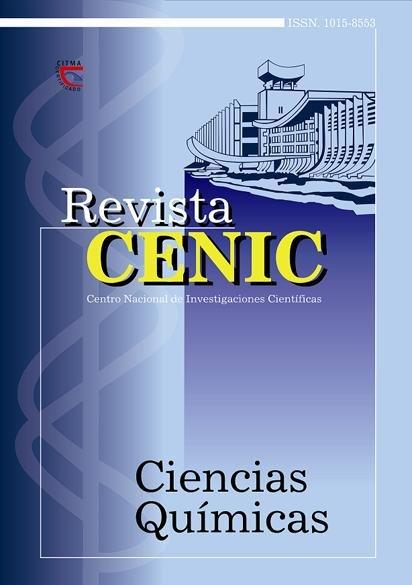Variation in catalytic properties of ZSM-5 type zeolite samples synthesized at different temperatures and evaluated in the model reaction of n-heptane
Abstract
ZSM-5 type zeolites synthesized at different temperatures and all the other experimental conditions remaining unchanged, have been evaluated as catalysts through the test of n-heptane. No remarkable changes were observed on the total conversion and the C4 fraction was majority in all of the catalytic tests. But, the C1/C6, C2/C5, C3/C4 (Cx = hydrocarbon with x carbon atoms) and paraffin/
olefin (P/O) ratios, evaluated from the initial selectivity (So), show notable changes. These variations depend of the synthesis conditions, which produce modifications in the physical chemistry features of the samples. In this paper the ratios between the initials products from direct and indirect cracking are analyzed and the possible mechanisms of the reactions are discussed. Both, olefins and paraffins in the range C2-C5 are primary products of direct and indirect cracking, C6 fraction although it appears as primary product, it is no only produced by direct cracking. In general, olefins are the main primary products of the direct cracking, especially in those strongest acidity samples. Initial selectivity to the light fractions increase with the temperature of synthesis but methane appear as primary product only in catalysts formed from zeolite of the highest acidic strength, i.e., samples synthesized at the highest temperature. The temperature employed to synthesis of ZSM-5 type zeolite influences on the catalytic properties of the material due to variations in Si/Al ratio and thus on its morphology, acidity and adsorption capacity.

Downloads
Published
How to Cite
Issue
Section
License
Copyright (c) 2002 Copyright (c) 2002 Revista CENIC Ciencias Químicas

This work is licensed under a Creative Commons Attribution-NonCommercial-ShareAlike 4.0 International License.
Los autores que publican en esta revista están de acuerdo con los siguientes términos:
Los autores conservan los derechos de autor y garantizan a la revista el derecho de ser la primera publicación del trabajo al igual que licenciado bajo una Creative Commons Atribución-NoComercial-CompartirIgual 4.0 que permite a otros compartir el trabajo con un reconocimiento de la autoría del trabajo y la publicación inicial en esta revista.
Los autores pueden establecer por separado acuerdos adicionales para la distribución no exclusiva de la versión de la obra publicada en la revista (por ejemplo, situarlo en un repositorio institucional o publicarlo en un libro), con un reconocimiento de su publicación inicial en esta revista.
Se permite y se anima a los autores a difundir sus trabajos electrónicamente (por ejemplo, en repositorios institucionales o en su propio sitio web) antes y durante el proceso de envío, ya que puede dar lugar a intercambios productivos, así como a una citación más temprana y mayor de los trabajos publicados (Véase The Effect of Open Access) (en inglés).













